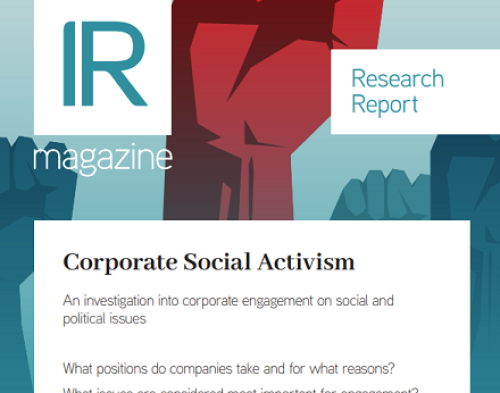Over the past two years, the pandemic and other large-scale events have altered the landscape in which public companies operate. These companies have been put to the test on how they are managing risks and opportunities throughout this period, especially as it relates to ESG practices. Such factors are being scrutinized by shareholders, who are using the power of their votes to push for progress in this area.
Many of the largest institutional investors have taken a comprehensive view of the micro and macro-level risks that threaten a company’s long-term growth and viability. Institutional investors, which are heavily indexed, see themselves as ‘forever holders’, meaning they will likely hold shares in companies until such companies cease to exist or fall out of an index. In this regard, the stewardship teams at these institutions – those monitoring ESG behavior, engaging with companies and voting shares – are looking at where their investments will be five, 10 and 20 years from now.
It is with this perspective that they hold companies accountable through their vote. In circumstances where they see companies lagging in progress, they are increasingly expressing themselves through voting and engagement.
A view beyond 2100
One of the biggest topics of discussion between investors and companies over the past two years has been around diversity, equity and inclusion. The pandemic and social justice movements have laid bare how inequality has produced real economic costs and social losses. A 2020 report by researchers at Citi found that the US economy lost out on as much as $16 tn over the past 20 years because of racial gaps in wealth. The report indicates that closing those gaps would lead to greater individual wealth that could be used for personal consumption, home buying or investment in small businesses. The research also states that rising inequality has damaging effects on social and political cohesion, causing social unrest and retrenchment from globalization.
On top of this, we are fast approaching a tipping point with climate change. A 2018 report by the Intergovernmental Panel on Climate Change – the United Nations consortium of researchers assessing human-caused climate change – warned world governments they must cut global emissions entirely by 2050 to avoid global warming of 2°C by the year 2100, beyond which climate change is forecast to cause a catastrophic $69 tn in damages. While this time period is beyond the lifetime of many of us, companies will continue to exist for the benefit of our descendants, whose wealth would be most impacted by climate change.
In light of all this, long-term shareholders are formulating how they are going to monitor and assess the social and environmental risks and opportunities at the companies in which they invest. To better understand these complexities, investors are asking for companies to produce data around these factors. Although US law does not currently require ESG-related disclosure, many observers believe it is simply a matter of when, not if, the SEC will adopt mandatory disclosure rules related to climate risk, diversity, human capital and related issues.
Our advice: Don’t wait
Our recommendation to company managements and boards is to be proactive and not wait for the SEC to mandate disclosure and compliance. It is important to recognize that investors already want to get a reading on ESG metrics. Corporations that want to get ahead of the curve can construct meaningful reports using standards such as those put forward by the TCFD or SASB.
Companies that have disclosed this data should be prepared to address investor expectations by articulating specific goals and demonstrating measurable progress. It’s no easy task to develop an ESG reporting regimen and collect the relevant data, but investor demand for such disclosure is growing, even if regulatory requirements have yet to be adopted. Companies that haven’t yet disclosed this data should begin engaging with their top investors to better understand their expectations.
Finally, environmental and social risks and opportunities must be addressed at the board level. More and more investors are demanding oversight from boards in these areas, whether at a committee level or the full board. Boards need to be better educated about these issues, and they should be part of the dialogue with shareholders, especially as long-term shareholders are electing these directors to oversee management and strategy on their behalf.
While some of the forces driving investor behavior in 2022 are new, the responses to those forces are time-tested. Company leaders need to gauge the best practices in their industry sectors, be prepared to defend their policies and practices, and consider adopting meaningful reporting protocols. Keeping an open channel of communication with shareholders and using all available channels to make an effective case for your strategic approach will still be the best pathways to a successful proxy campaign in the year ahead.
Bruce Goldfarb is president and CEO of Okapi Partners. Alexandra Higgins is managing director at Okapi Partners











